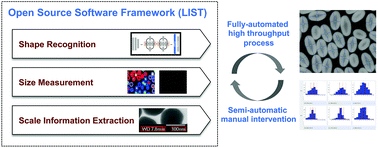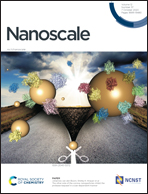Machine vision-driven automatic recognition of particle size and morphology in SEM images†
Abstract
Scanning Electron Microscopy (SEM) images provide a variety of structural and morphological information of nanomaterials. In the material informatics domain, automatic recognition and quantitative analysis of SEM images in a high-throughput manner are critical, but challenges still remain due to the complexity and the diversity of image configurations in both shape and size. In this paper, we present a generally applicable approach using computer vision and machine learning techniques to quantitatively extract particle size, size distribution and morphology information in SEM images. The proposed pipeline offers automatic, high-throughput measurements even when overlapping nanoparticles, rod shapes, and core–shell nanostructures are present. We demonstrate effectiveness of the proposed approach by performing experiments on SEM images of nanoscale materials and structures with different shapes and sizes. The proposed approach shows promising results (Spearman coefficients of 0.91 and 0.99 using fully automated and semi-automated processes, respectively) when compared with manually measured sizes. The code is made available as open source software at https://github.com/LLNL/LIST.



 Please wait while we load your content...
Please wait while we load your content...